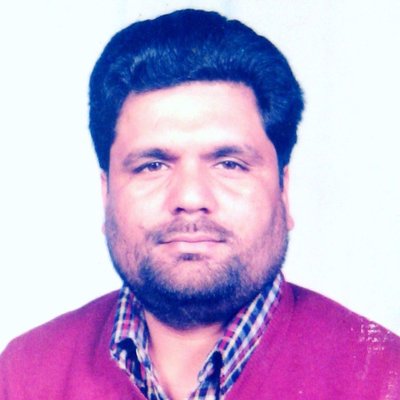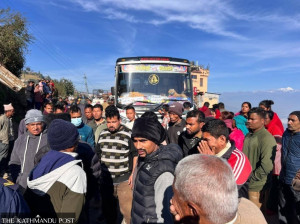Bagmati Province
Number of leprosy patients on the rise in Bagmati Province
According to the data of Health Directorate in Hetauda, the province has 367 leprosy cases in the current fiscal year, a rise from 209 cases in the last fiscal.
Pratap Bista
Thirty-nine-year-old Kanchhimaya Chepang of Khairang in Raksirang Rural Municipality Ward No. 9 has lost her fingers and toes to leprosy. She said she was also driven out of her village after she contracted the disease.
“Two years ago, my wife almost got paralysis due to the disease. The villagers ostracised her, as they feared she would transmit the disease to others. We kept her in a flimsy makeshift tent in the forest. But her life was saved after she received treatment in Raksirang,” said Pote Chepang, Kanchhimaya’s husband.
According to him, Kanchhimaya recovered from the disease by taking medications prescribed by a doctor on time.
Similarly, Bishnu Sharma, a local resident of Hetauda Sub Metropolitan City and a former leprosy patient, also got rid of the disease after taking medicines.
“If I had relied on shamans, I would still be with the disease,” he said.
According to doctors, leprosy caused by Mycobacterium leprae is transmittable. That is why most patients do not speak openly about the disease nor do they seek treatment for it. If left untreated, the disease could permanently damage nerves, eyes and limbs of the host body, doctors say.
The data of the District Health Office in Makwanpur states that the district has 10 reported leprosy patients on medication at present.
“These are just identified cases. There might be many more such cases hidden from everybody, as leprosy patients don’t openly talk about their disease in fear of being ostracised by the society,” said Bhola Chaulagain, a health worker.
Ten out of 13 districts in Bagmati Province have reported cases of leprosy. There are 243 leprosy cases in Lalitpur, 51 in Chitwan, 26 in Kathmandu, 10 in Makwanpur, nine in Sindhuli, eight in Dhading, seven in Ramechhap, four in Kavre and two each in Nuwakot and Bhaktapur districts. Rasuwa, Sindhupalchok and Dolakha districts are the only ones with no reported cases of leprosy.
According to Jayaram Duwadi, the tuberculosis and leprosy officer at the Health Directorate in Hetauda, the number of leprosy patients in Bagmati Province has increased in the current fiscal year.
“We have 367 leprosy cases in the running fiscal year, a rise from 209 cases in the last fiscal,” said Duwadi.
The government distributes free medicines to leprosy patients from various government-run health institutions across the country.
According to the data of the Health Directorate, there are a total of 20,044 leprosy patients across the country. Among them, 337 are children. The data showed that there are 271 leprosy patients in Province 1,554 patients in Province 2, 367 in Bagmati, 420 in Lumbini, 100 in Gandaki, 84 in Karnali and 228 in Sudurpaschim Province.
Leprosy was believed to have been eliminated globally in the year 2000 with the disease prevalence rate dropping to below 1 per 10,000 people. Though all countries have achieved this rate at the national level, at the sub-national level, it remains an unfinished agenda. Leprosy continues to afflict the vulnerable, causing life-long disabilities in many patients and subjecting them to discrimination, stigma and a life marred with social and economic hardships.
The World Health Organization (WHO) has considered Bangladesh, India, Indonesia, Myanmar, Nepal and Sri Lanka as high-endemic countries, contributing 99.8 percent of new cases from South-East Asia in 2014. The WHO had aimed to eliminate the disease from Nepal by 2020.
The World Leprosy Day is observed on the last Sunday of January every year.




 18.12°C Kathmandu
18.12°C Kathmandu












